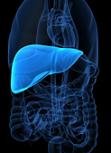Advertisment
EASL 2013 Report – Hepatitis C treatment in rapid transition

by Bruce Sylvester – Nine thousand clinicians gathered at the 2013 annual meeting of the European Association for the Study of the Liver/International Liver Congress in Amsterdam on April 24-28, 2013. Findings from Phase 2 and 3 clinical trials in hepatitis C dominated the news from the meeting.
At the opening press conference, EASL/International Liver Conference officials gave an overview of rapidly evolving and emerging hepatitis C treatment news.
The advent of direct-acting antiviral agents (DAAs) is about to change the treatment paradigm, said EASL Secretary General Mark Thursz, MD, consultant in gastroenterology and hepatology at St Mary’s Hosptial (Imperial Healthcare) and the Princess Grace Hospital, both in London, UK. He reported highlights of several DAA studies presented at the meeting. They included:
- Sofosbuvir(formerly GS-7977) — Researchers presented findings from a series of Gilead studies including FISSION and FUSION (sofosbuvir plus ribavirin for treatment-naive and treatment-experienced genotype 2/3 patients), POSITRON (sofosbuvir plus ribavirin for people with genotype 2/3 who are ineligible for, intolerant of, or unwilling to take interferon), and NEUTRINO (sofosbuvir plus pegylated interferon/ribavirin for treatment-naive patients with genotypes 1,4,5, and 6). Sustained virological response (SVR) rates were high and sofosbuvir was well-tolerated.
- Simeprevir (formerly TMC435) — the QUEST-1 (U.S.) and QUEST-2 (European) studies of simeprevir plus pegylated interferon/ribavirin for treatment-naive genotype 1 patients showed 12-week post-treatment SVR (SVR12) rates of approximately 80%, mostly with 24 weeks of therapy.
- Faldaprevir (formerly BI 201335) — the STARTVerso 1 trial produced an overall 88% SVR12 rate for treatment-naive genotype 1 patients in Europe and Japan using faldaprevir plus pegylated interferon/ribavirin.
- AbbVie all-oral combinations— the AVIATOR study showed that interferon-free regimens including the HCV protease inhibitor ABT-450, polymerase inhibitor ABT-333, and NS5A inhibitor ABT-267, with or without ribavirin, produced SVR rates exceeding 90% for treatment-naive and previously treated genotype 1 patients.
- Daclatasvir + asunaprevir— An interferon-free regimen of NS5A inhibitor daclatasvir (formerly BMS-790052), protease inhibitor asunaprevir (formerly BMS-650032), and polymerase inhibitor BMS-791325produced SVR rates exceeding 90% for treatment-naive genotype 1 patients. Another study showed Daclatasvir + asunaprevir is a potential rescue regimen for people who are not cured with standard-of-care triple therapy using approved HCV protease inhibitors.
Dr. Thursz noted that Janssen has made new drug applications to the U.S. Food and Drug Administration (FDA) and European Medicines Agency for approval of simeprevir, and Gilead applied for FDA approval sofosbuvir in early April.
Overall, Dr. Thursz described the latest DAA results as “very encouraging,” but cautioned that studies to date have looked at limited numbers of patients. “I’m excited to see what happens in Phase 3, but we’re not there yet,” he said.
One issue which has emerged in clinical trials is the difference in efficacy between patients with genotype 2 and genotype 3 hepatitis C. Patients are often studied as a single group, but subgroup analyses showed different responses to some DAAs. Dr. Thurz said that this is affecting the shape of Phase 3 studies.





